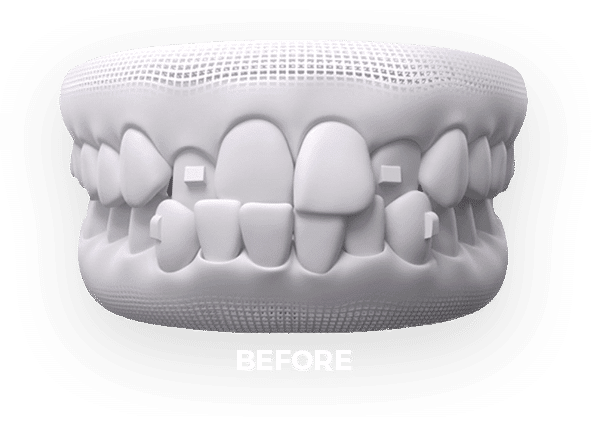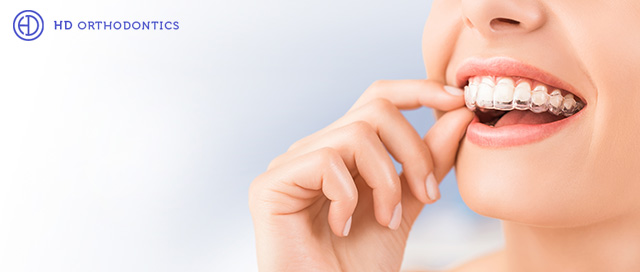Discover the Perks of Invisalign for a Perfect Smile Makeover
Discover the Perks of Invisalign for a Perfect Smile Makeover
Blog Article
Invisalign vs. Typical Braces: Which Option Is Right for You?
When considering orthodontic therapy, the choice between Invisalign and conventional braces provides numerous vital elements that warrant cautious evaluation. Invisalign uses a very discreet choice with detachable aligners, while conventional dental braces provide a more noticeable yet reliable solution for serious misalignment. Each option includes distinct advantages and drawbacks associated with appearances, comfort, therapy duration, and expense. Recognizing these nuances is vital for making a notified decision that lines up with your personal preferences and way of life. The inquiry remains: which option will best fulfill your orthodontic demands and assumptions?
Introduction of Therapy Alternatives

On the other hand, typical dental braces consist of steel brackets and cables that are bound to the teeth. This technique applies constant stress with time to attain alignment. While reliable for complicated orthodontic issues, traditional dental braces call for routine visits for changes and can pose difficulties in maintaining oral health as a result of the trouble of cleansing around brackets and cords.
Both alternatives have their values, and the choice usually depends upon certain dental problems, way of living choices, and individual conformity. Ultimately, speaking with an orthodontic specialist is important for determining the most ideal treatment plan customized to individual demands. Recognizing the nuances of each choice can considerably influence the general success of orthodontic therapy.
Aesthetic Considerations
A substantial element influencing the option in between Invisalign and traditional dental braces is the visual allure each therapy offers. Invisalign aligners are crafted from clear plastic, making them practically invisible when worn.
On the other hand, standard braces consist of metal brackets and cords, which can be more visible. While improvements in orthodontic modern technology have led to the advancement of smaller braces and tinted elastics, typical braces still keep an even more noticeable account. For some individuals, the exposure of dental braces may deter them from seeking needed treatment.
Eventually, the option in between Invisalign and conventional dental braces might rest on personal preferences pertaining to appearances. Patients that prioritize discernment typically lean toward Invisalign, while those who are less worried concerning presence may select conventional braces. Understanding the visual effects of each choice is crucial for making a notified decision that lines up with one's way of life and preferences.
Convenience and Convenience

In regards to ease, Invisalign aligners are removable, enabling people to enjoy their preferred foods without restriction and preserve optimal read what he said oral health. Brushing and flossing are simplified, as the aligners can be secured throughout these routines, whereas typical dental braces need careful steering around braces and cables.
In comparison, standard braces demand normal changes, making them less convenient for those with busy timetables. In general, the comfort and benefit of Invisalign make it an appealing choice for several people seeking orthodontic treatment.
Treatment Duration and Performance
While both Invisalign and traditional dental braces are effective in dealing with dental misalignments, the duration of therapy can vary dramatically in between the two choices. Typically, Invisalign therapy can take anywhere from 12 to 18 months, relying on the complexity of the situation. The clear aligners work by slowly moving teeth into their wanted positions, and regular follow-ups with an orthodontist aid make certain progress continues to be on the right track.
On the other hand, traditional braces often need a longer dedication, normally varying from 18 months to 3 years. This is due to their fixed nature and making use of braces and cables, which can be much more effective for complicated situations and extreme misalignments (Invisalign). The treatment performance of conventional braces is well-documented, as they permit exact adjustments site web and greater control over tooth movement
Ultimately, the option in between Invisalign and standard braces may rest on both the expected therapy duration and the particular dental concerns available. Consulting with an orthodontist is important, as they can provide tailored referrals based upon specific needs, ensuring the picked method aligns with desired durations and results.
Price Comparison and Insurance Policy Options
Cost plays a substantial duty in the decision-making procedure for individuals thinking about orthodontic treatment, whether going with Invisalign or traditional dental braces. Typically, the price of Invisalign varieties from $3,000 to $8,000, while typical dental braces commonly set you back between $2,000 and $6,000. Aspects affecting these costs include the intricacy of the case, the duration of therapy, and geographical area.
Several oral insurance policy strategies supply partial protection for orthodontic treatments, however the specifics can vary widely. Typically, conventional dental braces might be much more regularly covered by insurance policy plans contrasted to Invisalign, which some insurance companies classify as a cosmetic treatment.
Additionally, several orthodontic methods use adaptable layaway plan, making both therapy options extra available. People should ask about prospective funding choices and discounts for upfront settlements. Evaluating the total price, consisting of insurance coverage benefits and layaway plan, is vital for making an educated decision that aligns with both aesthetic choices and budget plan considerations.

Final Thought
In recap, the selection in between Invisalign and traditional braces depends upon multiple aspects, including visual preferences, comfort, treatment period, and price. Invisalign provides a very discreet, removable option that assists in dental hygiene and dietary versatility, while conventional dental braces might be preferable for intricate oral issues and frequently come at a lower cost factor. Ultimately, appointment with an orthodontist is vital to assess individual circumstances and identify the most proper therapy option for attaining optimum oral placement.
When taking into consideration orthodontic therapy, the option in between Invisalign and traditional braces presents several vital aspects that warrant cautious examination.Contrasting Invisalign and typical dental braces exposes unique treatment alternatives for orthodontic adjustment.While both Invisalign and traditional dental braces are efficient in dealing with dental imbalances, the duration of therapy can differ dramatically in between the 2 options.Price plays a significant function in the decision-making procedure for people considering orthodontic therapy, whether deciding for Invisalign or typical dental braces.In summary, the option in between Invisalign and typical additional reading dental braces pivots on several factors, consisting of aesthetic preferences, convenience, therapy period, and cost.
Report this page